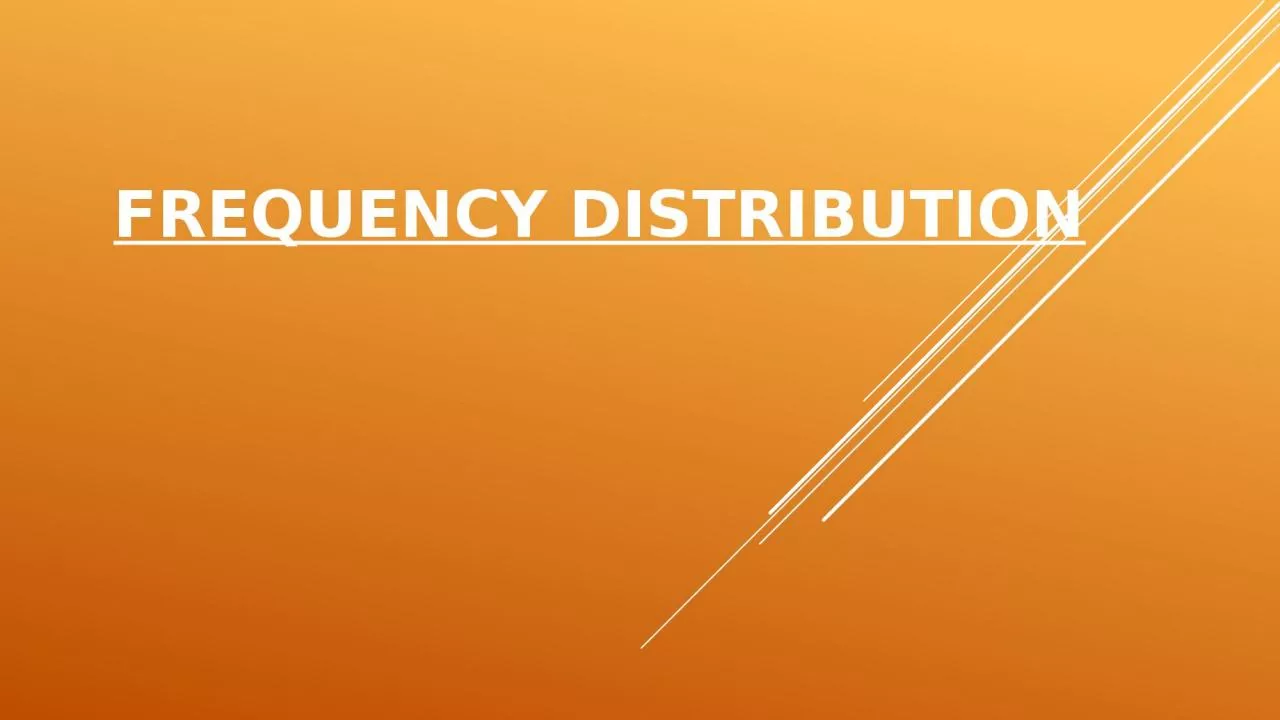

EX1 The following data explain the car accidents in 13 city 50 69 53 74 61 68 62 51 71 61 79 59 63 Solution Step 1 Data Arrangement 50 51 53 59 61 61 62 63 68 69 71 74 79 ID: 1027735
Download Presentation The PPT/PDF document "Frequency Distribution A tabular arrange..." is the property of its rightful owner. Permission is granted to download and print the materials on this web site for personal, non-commercial use only, and to display it on your personal computer provided you do not modify the materials and that you retain all copyright notices contained in the materials. By downloading content from our website, you accept the terms of this agreement.
1. Frequency Distribution
2. A tabular arrangement of data by classes together with the corresponding classes frequency.
3. EX1: The following data explain the car accidents in 13 city:50 , 69 , 53 , 74 , 61 , 68 , 62 , 51 , 71 , 61 , 79 , 59, 63 .Solution //Step 1: Data Arrangement:50 , 51 , 53 , 59 , 61 , 61 , 62 , 63 , 68 , 69 , 71 , 74 , 79Step 2: Find the rang (R) which is equal to:Rang = the greatest value – the smallest value +1 R = 79 – 50 + 1 = 30.
4. Step 3: Find the number of Classes (M) which is equal to: M = 2.5 = 2.5 = 4.74 ͠= 5OR M = 1 + 3.3 log n = 1 + 3.3 log 13 = 4.67 = 5Step 4: Find the length of the class or interval which is equal to: L = = = 6
5. Step 5: Find the boundaries of the class:Determine the lower limit of the class = 50 (the smallest value).Determine the upper limit of the class = the lower limit of the class + the length of the class – 1The Upper limit of the class = 50 + 6 – 1 = 55
6. Step 6: Construct the frequency table: a -The Classes and Frequency : ClassesFrequency50 - 55356 - 61362 - 67268 - 73374 - 792Total13
7. ClassesFrequencyMid Class50 - 55352.556 - 61358.562 - 67264.568 - 73370.574 - 79276.5Total13 B - Find the Mid Class: = = 52.5
8.
9.
10.
11. Cumulative frequency: This is calculated by adding the number of observation in each class interval to the number of observations in the class interval above, starting from the second class interval onward.
12. ClassesFrequencyMid ClassTrue LimitsRelative F.Percentage F.Cumulative Frequency50 - 55352.549.5 – 55.50.23123.1%356 - 61358.555.5 – 61.50.23123.1%662 - 67264.561.5 – 67.50.15415.4%868 - 73370.567.2 – 73.50.23123.1%1174 - 79276.573.5 – 79.50.15415.4%13Total13